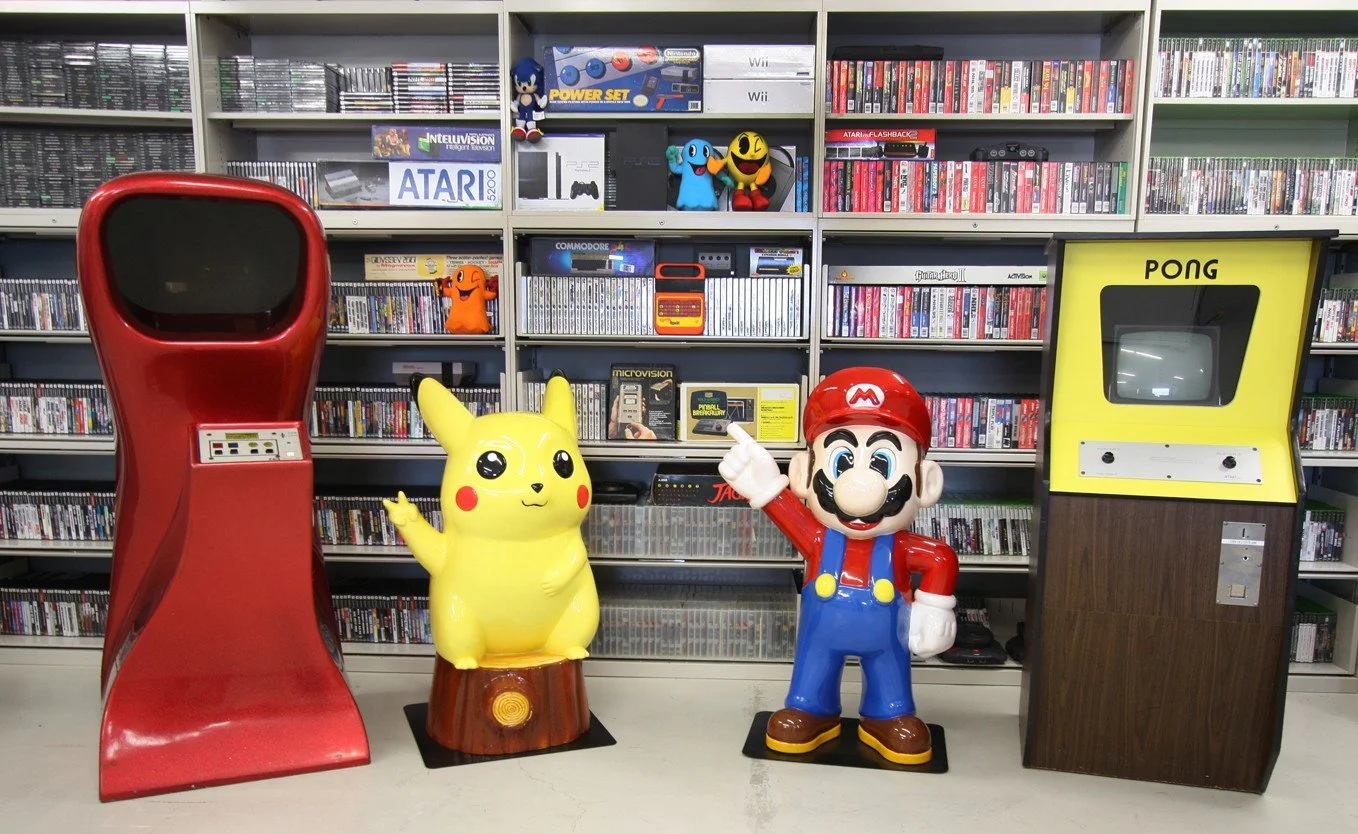The Mellon Digital Humanities Fellowship created the opportunity to work at the Strong Museum of Play. The Strong has the largest collection of video game archival materials in the world, and designs ground-breaking exhibits on the history of video games, such as their highly-acclaimed “Women in Games” exhibit. I worked extensively on developing two permanent video game exhibits, “Level Up” and “High Score,” which is housed in the Strong’s recently opened expansion.
-
From fall of 2020 to spring of 2022, I participated as an integral member of the five-person team responsible for designing of the upcoming, multi-million dollar, “Level Up” exhibit.
-
Using my extensive knowledge of video game history, I conducted “deep dive” research about key concepts that the “Level Up” exhibit will cover in its “Lore Book” activities.
-
The Strong allows creatives to wear many hats. During my time there, I helped with graphic design, UI layouts, and video editing.
The Strong National Museum of Play
Exhibit Design
Exhibit design requires balancing the rigor of a historian with the playfulness of an entertainer. The majority of my time at the Strong focused on the “Level Up” exhibit, acting as a core member of a five-person team, headed by ICHEG’s director, Jon-Paul Dyson. The “Level Up” exhibit includes over twenty interactive activities. Each interactive illustrates a fundamental concept related to video game design and history. Collectively, the exhibit surveys the eclectic experiences that video games offer. As a member of the exhibit’s design team, I was integral in its development, from broad concepts to specific details.
Research
-
Lore Books
Lore Books are sprinkled throughout the “Level Up” exhibit. Each book covers an important aspect of video game history or design. In all, I researched and wrote copy for eight Lore Books: avatars, bosses, simulation, jump, sneak, block-pushing puzzles, maps, and mazes.

-
Periodic Table of Video Games
In video games, players take action. They do things. “Level Up” reflects this unique property of the medium by using verbs as the organizing principle of the exhibit. My research for the museum systematized a diverse, yet cohesive, set of verbs that video games afford. I then organized them in the Periodic Table of Video Games. The Table became the organizing principle of the exhibit and is heavily featured throughout.

-
Video Game Ads
The “High Score” exhibit is divided by different lenses to understand video game history, one of which is from the perspective of the industry. To highlight the necessity of advertising, I researched video game TV ads, and compiled my findings into a brief video (see below).

-
Historical Revenue Data
Data on the early history of video game revenue is difficult to find. Using the Strong’s extensive archive, I compiled over a decade of reported earnings from Play Meter Magazine’s biweekly poll. This data was not previously publicly available, and will be used as the basis for a large scale, timeline video projection in “High Score.”

Media Production
Graphic Design
Communicating effectively requires careful and deliberate decisions about how information is conveyed. I produced over twenty summary sheets such as the one shown here, which were used to solicit companies to develop our concepts into fully functional products. Hours of our team’s brainstorming had to be distilled into a simple, legible prompt that was both specific in its goals but open for vendors’ creative input.
Interactive UI Prototyping
I helped develop several interactives, from the initial concept to the content to mock ups of the experience. These materials were used as the basis for final products. This is an example of the mockup I developed for the Lore Books.
Video Production
With a background in video production, I brought these skills to the Strong as well. This is a brief history of video game commercials, balancing ads that were exceptional and innovative, such as Sega’s “Nintendon’t” ad, with ones that are representative of typical commercials, such as the Magnovox commercial.



